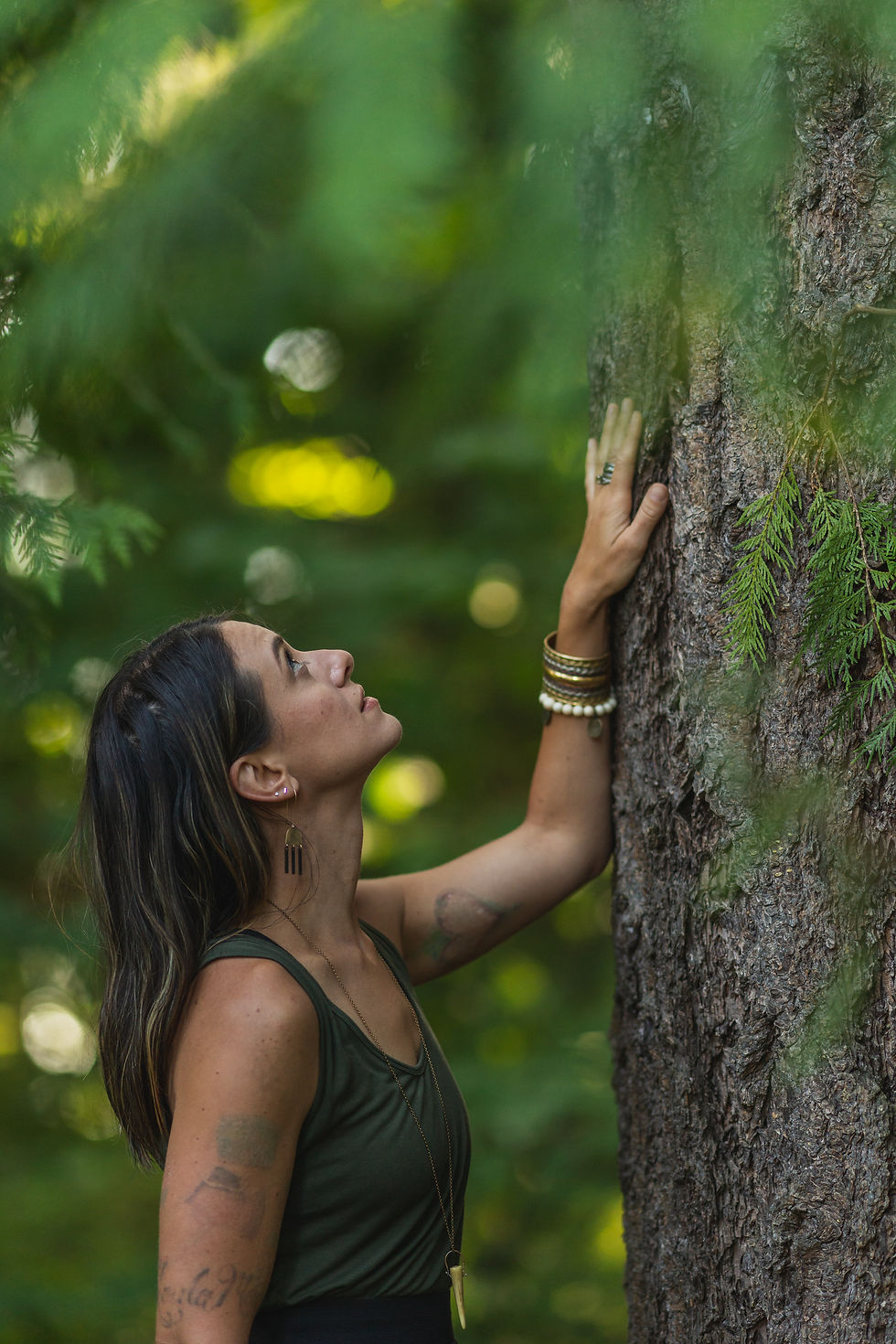Ingredient story: Sitka Spruce Tips
- Faith Dionne
- Jun 7, 2019
- 3 min read
Updated: Jun 28, 2020
For a few weeks each May, the conifers of Oregon get fancy. Between the rain and the sun breaks, bright green shoots decorate the boughs of the Douglas firs in our neighborhood, and I know that it is time to head to the coast for our annual Spruce Tip Harvest.
I identify Sitka Spruce trees by the bark. It looks scaly, like grey, glued on potato chips, and is quite distinctive when it’s not moss covered. I can spot it from a moving car. The second identifier is the needles, which are green on top and almost white underneath. They are rigid and sharp. You don’t ever want to shake hands with a spruce or you’ll come away bleeding. The third is the taste of the tips. Sitka Spruce tips are uniquely lemony with a bit of honeydew melon.

One of the most fascinating findings in studies of Sitka Spruce is that trees along the salmon rich waters of the Pacific are made from fish! Spawned salmon are scattered along the coastline and into the forest where the tree roots absorb them and turn them into rapid new growth. Studies show that up to 70% of the Nitrogen in riparian zone foliage comes from salmon. In turn, the trees shade the streams, limit erosion, and create shelter for the salmon fry. You can read more about the special relationship between salmon and spruce here.
Spruce Tips are a prized ingredient in Southeast Alaska where I was raised. The springtime tips are famously high in vitamin C and are brewed into a healthful tea, syrups, salts, confections, and beer. This year my family harvested in Oregon's Siuslaw National Forest where the forest meets the Pacific.

Our foraging trip started with a stop at the Waldport ranger station to pick up the Special Forest Products permit for spruce tips. We then headed to a favorite forest road nicknamed “mushroom heaven” due to the abundance of choice edibles we’ve found on it. The deep forest yielded a lovely setting and fresh air, but sparce and feathery tips. The forest floor was speckled with wind fall’s dense, chartreuse tips of the higher branches. It was clear that the deep forest put its best tips at the top of the canopy out of our reach, leaving only small tips on our level. We ended our day on a hillside we flagged on a previous year with several tidy flushes of oyster mushrooms.
The next day we chose a road with extreme exposures. Unlike the conical giants of the deep forest, these trees were sculpted by the ocean winds with gnarled trunks, no obvious top point, and were covered in dense, juicy tips with a bright intense flavor. These were the tips we wanted for our next batch of Verstovia Spruce Tip Vodka.
Along the steep hillside, Sitka Spruce and salal bushes formed a dense thicket of delicious ingredients. The salal was in full bloom, promising a good harvest of salt kissed berries in the fall. The ocean was far below us, but we enjoyed sweeping views of the Pacific Ocean and the thundering surf as we collected our prize.
Each bottle of Verstovia Spruce Tip Vodka contains the essence of 2 cups of hand foraged wild Sitka Spruce tips. It has found favor as a soft fresh botanical spirit in cocktails. My favorite flavor pairings so far: tart cherry, cranberry, green walnut, peach, honeydew, vanilla, ginger, mint, and of course lemon and lime. If you want to experience the pureness of flavor, I suggest a vodka soda with a squeeze of lemon, or a martini with a flake of sea salt and a twist. I’d love to hear how you use Verstovia Spruce Tip Vodka.




What a nice article! Love all the info. Thanks for sharing